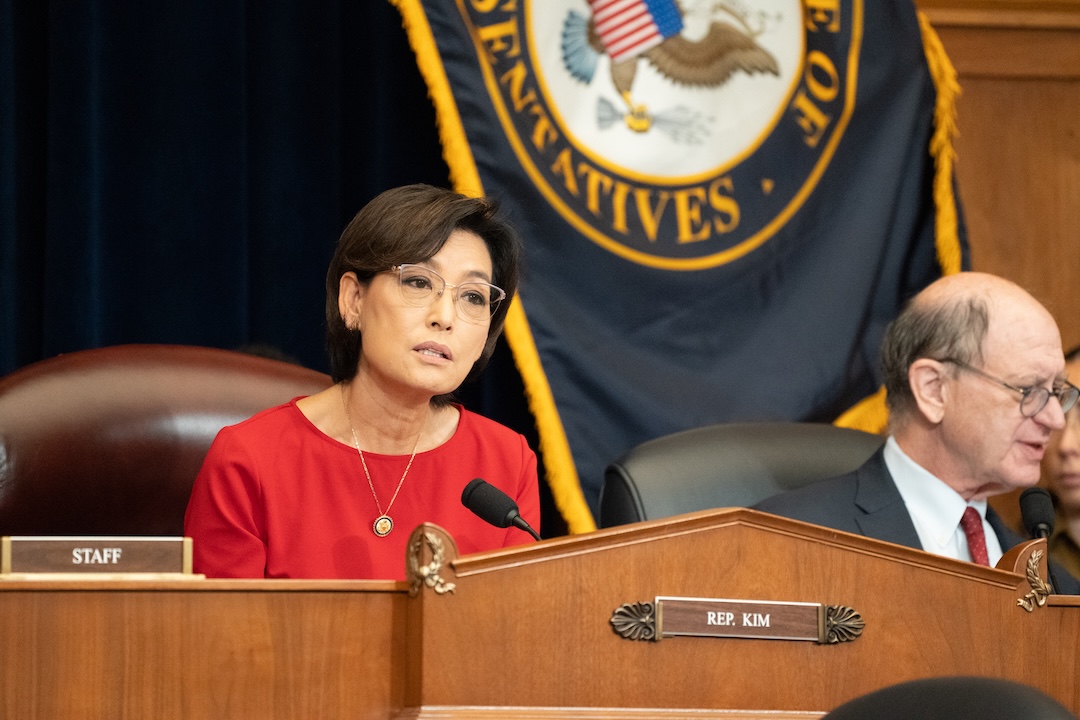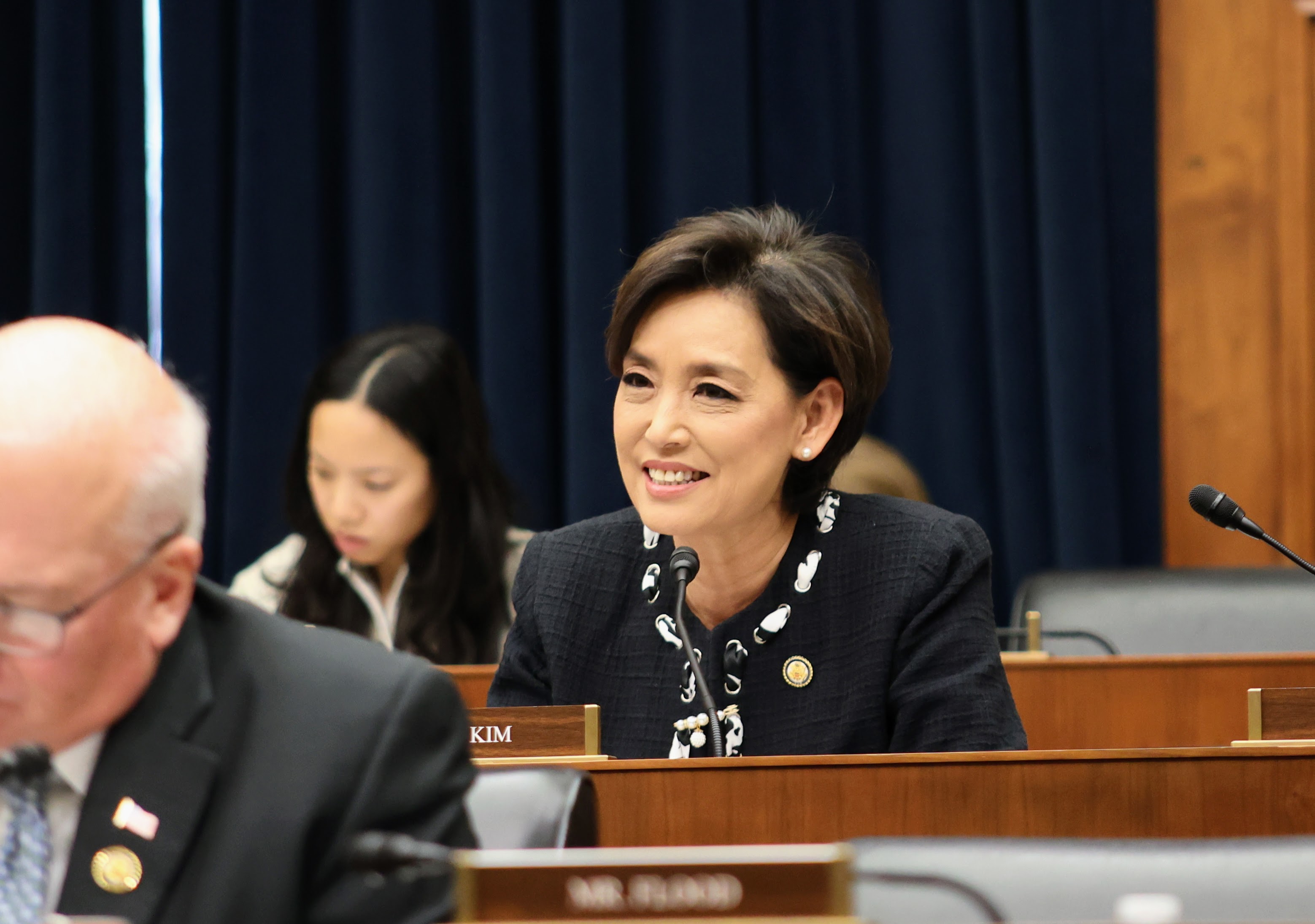Educate students, starting in middle school, about how to avoid becoming victims of human trafficking.
Change federal law so traffickers can’t dodge a long prison sentence by claiming they didn’t know their victim was a child.
Give money and shelter to teens aging out of foster care so they won’t continue to be top targets for human trafficking.
Those ideas are just part of a wish list from a panel of 10 experts who gathered March 21 in Placentia for the inaugural meeting of the Human Trafficking Congressional Task Force.
Rep. Young Kim, R-La Habra, launched the federal task force to hear directly from Orange County law enforcement who are on the front lines of prosecuting human traffickers, and leaders of Southern California nonprofits who work to prevent trafficking and to support survivors.
“Many people think that this is just something that doesn’t apply to me,” Kim said. “(But) modern day slavery is something that happens in our backyard, too. It happens in Fullerton, it happens in Santa Ana, it happens at the border, it happens everywhere.”
And, Kim added, the pandemic has only meant “increased risks and reduced prevention efforts” related to human trafficking.
Monday’s roundtable offered a snapshot of what human trafficking looks like locally, what work already is being done to fight it, and where more help is needed.
Kim said she hopes these conversations, which will happen at least once a quarter, might inform legislation she can introduce and federal funding requests she can make to help tackle the problem across the nation.
“They already know what they are doing,” Kim said of the experts who spoke during Monday’s task force meeting. “So I just want to be helpful by being supportive of the existing programs and enhancing their work.”
Identifying the problem
Orange County has been rocked over the years by some high-profile trafficking cases.
Most recently a February operation timed around Super Bowl Sunday led to police arresting 56 men and rescuing 16 victims.
One of the first local cases to get widespread attention involved Shyima Hall, an Egyptian girl whose poor family sold her into slavery when she was 8 years old. Hall was 10 when she was brought to Irvine and forced to spend her waking hours doing housework for a wealthy family. Hall was rescued two years later, with her case sparking creation of the Orange County Human Trafficking Task Force in 2004.
The task force — a partnership between local law enforcement agencies and aid groups such as Waymakers and the Salvation Army — has helped more than 1,200 victims from 43 countries, including the United States, over the past two decades. Around 100 new victims are identified each year, with a network of some 50 organizations helping those survivors get housing, legal services, trauma counseling and other needs.
On Monday, as leaders from the Orange County task force joined Kim’s roundtable, to take what they’ve learned locally and use it to help inform federal policy, they said one of the first obstacles to tackling the problem is combating common myths about trafficking so that victims and the public can recognize the real threat when they see it.
Anaheim Police Sgt. Juan Reveles, who heads up the county’s Human Trafficking Task Force — and has focused on the issue for nearly a decade — said he’s not a fan of billboards that some advocacy groups have installed along California freeways that depict young women in cages and shackles.
“Eight years of this, hundreds of victims, I have yet to run across that,” Reveles told the task force Monday, referencing the kind of bondage depicted in the public service ads.
He added that the promotion of a situation that’s virtually non-existent — one of women kidnapped off the streets and physically restrained — will convince people to think “‘When I see that, I’m going to call the police.’ (But) you’re not going to see that.”
Instead, Reveles said that when he trains hotel workers how to spot trafficking victims, he delivers a different message: “Their cages are your rooms.”
The education process grew more complicated in 2020. That’s when conspiracy theories about the prevalence and nature of human trafficking, with an emphasis on demonizing Democrats and immigrants, picked up so much steam in some conservative-leaning online media that the county’s task force put out a fact sheet to set the record straight. It debunked myths such as claims that kids wearing face masks to combat COVID-19 made them vulnerable to traffickers, or that there was a “constant, active and immediate threat to local children.”
Task force leaders urged residents to educate themselves and to research claims before spreading them. “Passing along incidents that are anecdotal or manipulated, myth-based theories takes precious time, energy and resources away from the real threat to victims.”
In reality, local human trafficking most often involves involve young women or teens who’ve been lured into sex work or, less commonly, other forms of forced labor. In 2019 and ’20, nearly nine in 10 local victims were U.S. citizens. So while there are instances of foreign nationals being victimized, the data dispels the idea that trafficking cases commonly involves women forcibly brought across the border from Mexico.
Instead, traffickers typically target locals who appear vulnerable, including people who deal with substance use or mental health concerns, are runaways or homeless, have recently migrated or relocated, and anyone in the child welfare system. Grooming usually happens online, Reveles said, with predators watching for young girls on social media talking about issues such as mental health or addiction.
Traffickers often initially pose as romantic partners, wooing victims until they are dependent on the trafficker for housing, food or other basic needs. Then, they often threaten physical violence if the victim tries to leave.
That cycle creates a “trauma bond,” where people who’ve been trafficked often don’t initially see themselves as victims and hesitate to point the finger at the person who’s been exploiting them, said Greg Eubanks, chief officer of Crittenton Services, a Fullerton-based nonprofit that supports survivors.
There also is a persistent problem with local massage parlors serving as fronts for brothels, Reveles said. Language barriers often pose a challenge in such cases, since most of the victims are Asian immigrants. Also, business owners will try to claim they didn’t know what their workers were doing, while in reality the employees often were forced into sex work.
Recognizing that dynamic, Orange County stopped arresting minors for prostitution in 2014, (three years before state law required that throughout California) and, instead, started to view those children as victims of sex crimes. It’s been a major paradigm shift, Reveles acknowledged, with ongoing conflicts over terminology and treatment of adult sex workers. But panelists said that shift is a key reason why the anti-trafficking efforts in Orange County are viewed as among the most effective in the nation.
Last fall, anti-trafficking law enforcement from across the state traveled to Irvine for training, and Reveles said local task force leaders have gone to other counties around the state to share their model.
More help needed
While much progress has been made in raising awareness and creating tools to combat human trafficking, experts on Monday told Kim that more help is needed.
Law enforcement asked Kim to throw her support behind California Senate Bill 1042, which is up for a committee hearing April 5. The bill, from state Sen. Shannon Grove, R-Bakersfield, would add human trafficking to California’s list of “violent felony” crimes subject to the “three strikes” law, which mandates sentences of 25 years to life in prison for anyone convicted of a third crime on that list.
But the bill could face an uphill battle in the Democrat-controlled legislature, which has generally moved to reduce incarceration rates for many crimes. A panel appointed by Gov. Gavin Newsom currently is pushing to soften some aspects of the three strikes law, which it argues have forced taxpayers to foot the bill for lengthy sentences that haven’t been shown to deter crime.
Advocates on Monday also told Kim about several areas where additional federal funds would come in handy.
Michelle Murphy, with Orange County United Way, praised a program created under the Trump administration that helped them get vouchers for 25 local residents aging out of foster care to cover their housing for three years. Murphy called the vouchers “a godsend” in helping former foster kids get on the path to self sufficiency, and asked Kim to consider advocating for more vouchers to cover housing needs for five years.
Along with funds for prevention programs, Alycia Capone with Women’s Transitional Living Center in Fullerton emphasized the need for long-term support for survivors. However long victims were trafficked, she said, it takes three to five times longer for them to recover.
Last year, congress revived earmarks, a process that allows House members to request funding for specific projects in their districts. Kim said human trafficking will definitely be under consideration as she eyes her next round of Community Project Funding requests this spring.
Anyone who suspects they have information about human trafficking is urged to call the National Human Trafficking Hotline at 888-373-7888. To volunteer or learn more about the Orange County Human Trafficking Task Force, visit OCHumanTrafficking.com.




